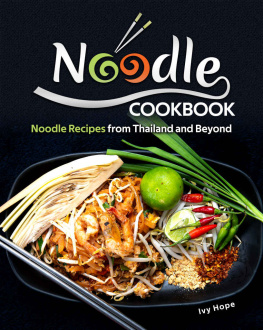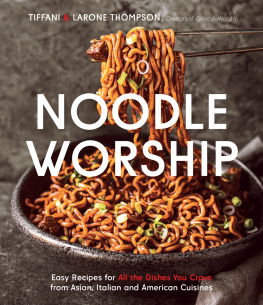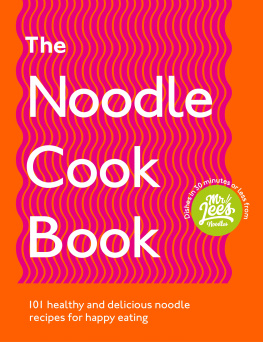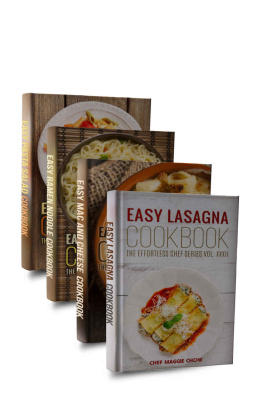
Text copyright 2015 Kelsey Kinser. Design and concept copyright 2015 Ulysses Press and its licensors. All rights reserved. Any unauthorized duplication in whole or in part or dissemination of this edition by any means (including but not limited to photocopying, electronic devices, digital versions, and the Internet) will be prosecuted to the fullest extent of the law.
Published in the U.S. by
Ulysses Press
P.O. Box 3440
Berkeley, CA 94703
www.ulyssespress.com
ISBN: 978-1-61243-501-5
Library of Congress Control Number 2015937565
Acquisitions editor: Kelly Reed
Managing editor: Claire Chun
Editor: Renee Rutledge
Proofreader: Lauren Harrison
Cover and interior design: what!design @ whatweb.com
Layout and production: Lindsay Tamura
Cover photograph: JudiSwinksPhotography.com
Cover food stylist: Anna Hartman-Kenzler
Distributed by Publishers Group West
IMPORTANT NOTE TO READERS: This book has been written and published strictly for informational and educational purposes only. It is not intended to serve as medical advice or to be any form of medical treatment. You should always consult your physician before altering or changing any aspect of your medical treatment and/or undertaking a diet regimen, including the guidelines as described in this book. Do not stop or change any prescription medications without the guidance and advice of your physician. Any use of the information in this book is made on the readers good judgment after consulting with his or her physician and is the readers sole responsibility. This book is not intended to diagnose or treat any medical condition and is not a substitute for a physician.
This book is independently authored and published and no sponsorship or endorsement of this book by, and no affiliation with, any trademarked brands or other products mentioned within is claimed or suggested. All trademarks that appear in this book belong to their respective owners and are used here for informational purposes only. The author and publishers encourage readers to patronize the quality brands and products mentioned in this book.
Contents
Who doesnt love pasta? No one, thats who. But who needs all those simple carbohydrates and empty calories from pasta? The answer, once again, is no one. What if you could continue to have all of your favorite pasta dishes, from lasagna to lo mein to kugel to everything in between, without all of the refined sugars and simple carbohydrates? And what if you could simultaneously enjoy all of your favorite noodles while upping the amount of fruits and vegetables in your daily diet? Sounds like a win-win scenario, does it not? Thats because it is, and with this book, Im going to walk you through how to do just that while also showing you how to vegetize almost any pasta- or rice-based recipe. While this is much easier to accomplish than it sounds, it does involve a small one-time investment in a vegetable spiral slicer.
Vegetable spiral slicer. Its a mouthful for sure and may sound foreign (or at least novel) to you now, but its really nothing but a big old name for a small new appliance. Affectionately called zoodlers or spiralizers for short, a surprising number of spiral slicers are on the market today.
Why should you bother getting a new appliance just to make vegetable noodles? Because its one of the easiest methods to getting more vitamins, fiber, and other nutrients in your diet while simultaneously cutting your intake of simple carbohydrates. If youre trying to avoid gluten or stick to a Paleo diet, I cant think of an easier way to re-create many dishes that would be considered off the table. Ive found that its also one of the simplest ways to get children excited about making and eating their veggies. Kids love to use the spiral slicera big motivation to use it often in my elementary school cooking classes. The average serving (about 2 cups of cooked vegetable noodles) ranges anywhere from 10 to 35 percent of the calories of classic pasta.
It is possible to make different types of veggie noodles with things you may already own, but you wont be able to achieve those long, slender spiral noodles without a veggie spiral slicer. You can, however, make yourself some nice zucchini lasagna or stuffed veggie manicottis. For these styles of noodles you can use a mandolin or a vegetable peeler. If you want to make some sweet potato rice you can use a shredding blade attachment for the food processor or a simple cheese grater. Ultimately, Im sure youll find the low cost and high usability of the spiralizer of your choice a worthwhile investment for your heart health, waistline, and taste buds. You can add veggie noodles to soups, salads, sandwiches, use them in place of pastas, and easily surpass the daily recommended serving of vegetables.
Types of Spiralizers
Lets take a brief moment to look over the most popular brands, their pros and cons, and their average cost as of the writing of this book.
The most popular style of spiralizer is the tri-blade, as it offers three different slicing blades to make a fantastic variety of noodles. My personal favorite brand to use is the Paderno Spiralizer 3-Blade, though I have had success with other brands. Currently Paderno offers three- and four-blade options. The average price runs from $25 to $55 dollars depending on where you make your purchase. I personally find the fourth blade to be unnecessary and therefore stick with the cheaper three-blade option. Pros of this model include ease of use, ease of clean up, three different blades for creating different noodles, low cost, ability to spiralize fruits and veggies of many different sizes, and the fact that its lightweight and easy to store. Cons include occasional loosening of the suction cup feet and seemingly weak plastic teeth for securing tougher root vegetables and squashes (although none Ive used have actually broken). The three- (or tri-) blade style of spiralizer is the one we will use most throughout this book. There are other brands offering this style, including the Spiralizer Elite Spiral Slicer, Brieftons Tri-Blade Spiralizer, Benriner Turning Slicer, Kitchen Basics Tri-Blade Plastic Spiral Vegetable Slicer, iPerfect Kitchen Tri-Blade Vegetable Spiralizer, and Inspiralizer from the wonderful spiral slicerbased blog Inspiralized.com.
The second most popular style of spiral slicer is one that resembles a pencil sharpener. The most well-known brands for this style are the Veggetti, All Times Finest, SpiraLife, Supreme Home Cook, and Gogogu. Im going to be honest here, while the prices are much lower (starting anywhere from $10 for a single blade to $25 for a multi-blade option), I do not find them to be worth the cost. But lets break them down into pros and cons so that you can make your own educated purchases.
Handheld spiralizers are lower in cost and smaller, therefore taking up less kitchen space, but thats about it when it comes to the pros. These spiralizers are more difficult to clean, somewhat awkward to use since you have to hold them, and limited in the type of fruits and vegetables that you can use with them. The size of these slicers are primarily geared toward zucchinis, carrots, and other long and slender veggies. I will not refer to this style of slicer from this point on.
Another option is the hand-crank style that resembles a baby food processor. The Joyce Chen Spiral Slicer seems to be the most common of this style. Ive found it priced anywhere from $20 to $35. It is outfitted with three main pieces: a bottom-level receiving area where the noodles are deposited, a middle section to place the vegetable that is about to be sliced, and a blade/crank apparatus on top. The main advantage of this style is that the noodles are kept nice and contained in the bottom portion of the appliance. The cons are many. The machine has more parts to clean, is bulky, requires you to crank somewhat hard, and all of your vegetables must be trimmed to fit into the middle slicing compartment. As an alternative, I would recommend using specialty blades on your food processor if you have one, which leads us to the other methods available using equipment already found in your kitchen.
Next page








